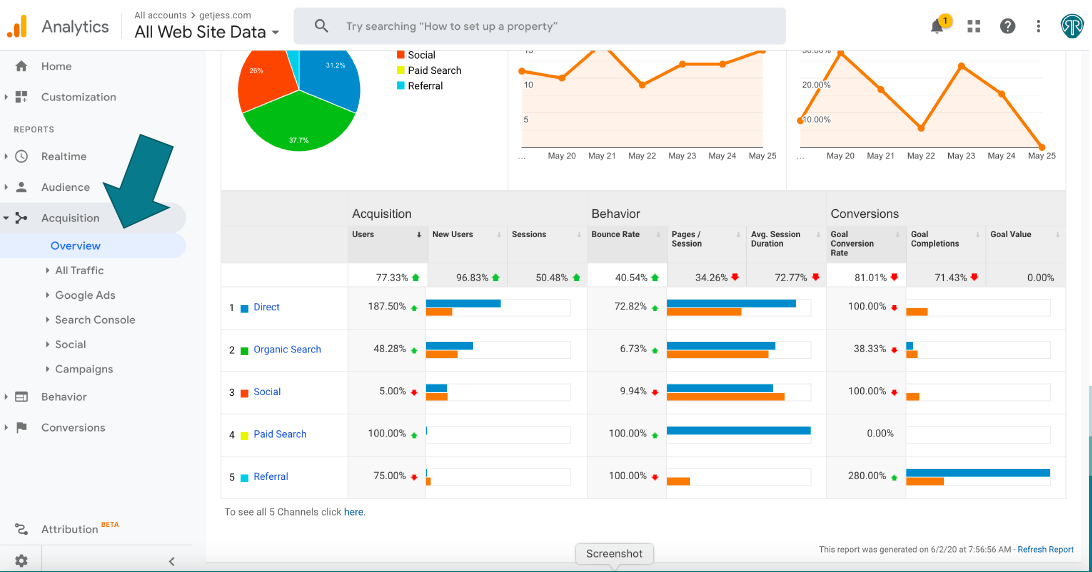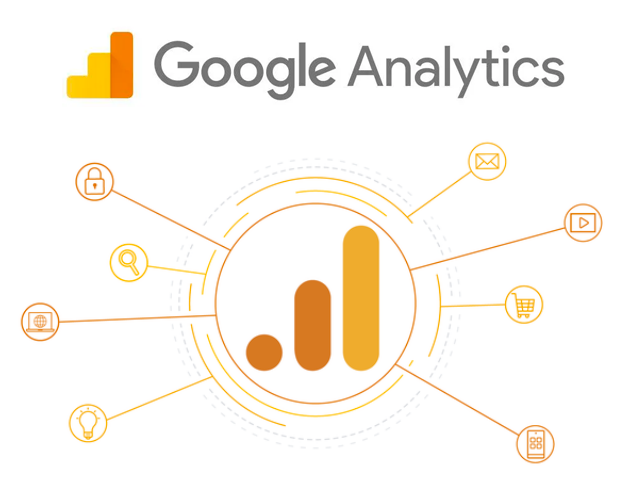Enhance Your Search Engine Optimization Strategy With Effective Google Analytics Tracking Code
Incorporating Google Analytics tracking code into your Search engine optimization approach is a pivotal step toward accomplishing quantifiable results. What details strategies can you embrace to optimize the influence of this information on your SEO initiatives?

Recognizing Google Analytics Fundamentals
To efficiently leverage Google Analytics for Search Engine Optimization, it is necessary to grasp its fundamental principles. Google Analytics works as an effective device for tracking and analyzing web site traffic, giving insights that are important for optimizing online search engine efficiency. At its core, the platform makes it possible for individuals to monitor customer habits, web traffic sources, and crucial performance signs (KPIs) such as bounce prices and session periods.
Knowledge with the interface is essential. Key areas consist of the Audience, Purchase, and Behavior tabs, each supplying valuable information. The Target market section offers group understandings, helping to tailor material to target customers successfully. The Purchase tab discloses how site visitors get here at the site, whether with natural search, paid ads, or social media sites, guiding calculated changes in advertising and marketing initiatives.
Recognizing metrics such as natural traffic volumes and conversion rates is crucial for examining search engine optimization performance. Inevitably, understanding these essentials allows digital marketing professionals to harness the complete possibility of Google Analytics, driving educated choices that boost general search engine optimization approaches. By developing a strong structure, services can properly assess their efficiency and recognize opportunities for renovation in their on-line visibility.
Establishing Up Monitoring Code
Appropriately setting up the monitoring code is essential for exact information collection in Google Analytics. The very first step involves creating a Google Analytics account and home, where you will receive an one-of-a-kind monitoring ID. This ID is necessary for linking your web site's information to your Google Analytics account.
Once you have your monitoring ID, integrate the monitoring code bit into your site's HTML. This is usually positioned in the header section of each page to guarantee it loads early in the web page providing process. If you're making use of a Material Management System (CMS) like WordPress, several plugins streamline this process, enabling you to add the monitoring code without direct HTML editing.
After carrying out the tracking code, it is essential to evaluate its performance. If the monitoring code is properly mounted and working, you can make use of the Google Tag Assistant device to confirm. Additionally, keep an eye on the real-time reporting function in Google Analytics to confirm that data is being accumulated properly.
Making certain that the monitoring code is correctly established lays the structure for effective data evaluation, allowing you to make enlightened choices to enhance your search engine optimization technique and total website performance.
Secret Metrics to Display
Identifying crucial metrics to monitor is necessary for understanding the efficiency of your SEO method via Google Analytics. By concentrating on particular information factors, you can gauge the influence of your optimization initiatives and make informed decisions to improve efficiency.
Among the key metrics to track is organic website traffic, which suggests the variety of site visitors getting discover this info here here at your site through online search engine. This metric mirrors the total health of your SEO technique. Next, keep an eye on the bounce rate, which shows the portion of visitors who leave your site after checking out just one web page. A high bounce price might signify that your content is not meeting user expectations or that your landing web pages require enhancement.
In addition, take into consideration tracking conversion prices, as these metrics disclose exactly how well your website meets its service goals, such as producing leads or sales. Keyword phrase rankings are also critical; surveillance adjustments in keyword settings helps evaluate the performance of your targeted search engine optimization efforts. Ultimately, analyze the typical session duration, which shows individual interaction and content significance. By closely adhering to these crucial metrics, you can acquire valuable understandings into your SEO method's performance and recognize areas for improvement.
Analyzing Customer Behavior
Recognizing user behavior is important for refining your SEO method and maximizing site performance. Google Analytics offers a riches of data on customer engagement metrics, such as bounce rates, time on website, and web page sights per session.
In addition, tracking user circulation can expose typical navigating courses, highlighting prospective traffic jams or areas for renovation. Comprehending the demographics, rate of interests, and geographic places of your visitors enables more tailored web content that speaks to their needs. Utilizing segmentation attributes in Google Analytics better boosts your capability to assess customer habits by enabling you to compare different target market teams.
Moreover, keeping track of conversion rates and user actions can supply insights into the effectiveness of your phone call to action and overall website style. This holistic view of user actions is essential for making go to these guys educated choices that enhance user experience and drive greater interaction, ultimately adding to enhanced SEO efficiency.
Leveraging Insights for SEO
Consistently leveraging understandings acquired from user habits analysis can dramatically Going Here improve your SEO initiatives. By utilizing Google Analytics, you can recognize essential metrics such as bounce rates, session period, and individual flow, which expose how site visitors interact with your web content. These insights allow you to pinpoint locations needing enhancement, such as high exit web pages or underperforming key phrases.

Additionally, tracking natural website traffic resources supplies clearness on which channels are most effective, enabling you to assign sources purposefully (when does the google analytics tracking code send an event hit to analytics?). By assessing conversion prices together with web traffic data, you can determine which pages drive actual organization outcomes, fine-tuning your SEO strategy better
Incorporating these insights right into your material strategy not just improves visibility yet likewise promotes a much more user-centric method. Inevitably, a data-driven search engine optimization technique educated by analytics not only boosts positions however likewise aligns your purposes with user assumptions, causing sustained development and engagement.
Conclusion
Efficient implementation of Google Analytics tracking code substantially boosts a SEO approach by supplying important understandings into individual actions and website traffic sources. Checking key metrics such as organic traffic, bounce rates, and conversion prices facilitates the identification of enhancement locations. In addition, evaluating individual demographics and engagement metrics permits an extra targeted material approach. Ultimately, leveraging these insights contributes to improving search engine optimization efforts, driving even more relevant traffic, and enhancing general web site efficiency.
Incorporating Google Analytics tracking code into your Search engine optimization approach is a crucial action towards accomplishing measurable outcomes. At its core, the platform allows individuals to keep track of individual behavior, traffic resources, and crucial efficiency indicators (KPIs) such as bounce rates and session periods.
Recognizing individual behavior is essential for refining your Search engine optimization method and taking full advantage of site performance.Continually leveraging understandings acquired from user actions analysis can considerably boost your Search engine optimization initiatives.Effective execution of Google Analytics tracking code substantially improves a Search engine optimization method by offering crucial insights right into individual behavior and web traffic sources.